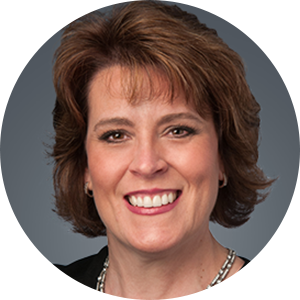
Thinking ahead, to retirement can feel daunting at any age, whether you’re 30 years away or 30 weeks. And often the biggest unknown is money. What will it cost to live in retirement? Will you have the means to live the life you imagine when you’re no longer generating income?
These questions can be especially worrisome for women because many women face financial challenges that many men simply don’t. A primary consideration is lifespan. Women live about six years longer than men on average, according to the Centers for Disease Control and Prevention. That means women need to fund a longer retirement – which is easier said than done.[1]

“Living longer can become problematic for women who start out with a financial deficit,” said Tracy Sorzano, senior vice president and wealth strategy regional manager, “and, based on the stats, this is the case for most women.”
The U.S. Department of Labor says that women in 2023 make 84 cents to every $1 that men make.[2] Additionally, women are more likely than men to work in part-time roles and to pause their careers to care for children or parents. Both situations can impact how much they have contributed to employer-sponsored retirement savings plans or whether they have access to such a plan at all.
But even women with wealth can find themselves in a precarious financial situation during their retirement years.

“Don’t take a backseat,” said Mary Ellen Hancock, senior vice president and senior wealth strategist. “If you’re married, planning for the future should be a partnership. Make your goals clear and become well-informed about your options.”
Here are a few more tips for building a financially comfortable retirement:
Save, so you can invest. Create a budget that shows your monthly income and expenditures, and then reduce unnecessary spending to increase the amount you can set aside for retirement. If you have the opportunity to contribute to an employer retirement plan, do it, even if it’s a small amount, or open an alternative retirement savings account. Setup automatic contributions to move money from your spending account to your savings. When you get a pay raise or bonus, earmark some or all of those funds for your retirement account. But don’t compromise your current financial health, notes Sorzano. Should you need to temporarily reduce or pause making retirement contributions to deal with unexpected expenses, get back on track as soon as it’s feasible.
Get paid what you’re worth. Combat the economic gender gap by researching the pay scale for your job, knowing your value to your employer and negotiating the compensation you deserve. One resource is “Ask For It: How Women Can Use the Power of Negotiation to Get What They Really Want,” the follow-on book to “Women Don’t Ask” by researchers Linda Babcock and Sara Laschever.
Become an informed investor. In addition to saving for retirement in an investment account, begin investing independently. If you aren’t sure where to start, ask your bank to connect you with a financial professional. “Start small and understand what you’re buying, whether you’re investing in a company, exchange trade or mutual fund, and then monitor your funds to see how they’re performing,” said Hancock. “Keep in mind that short-term volatility is normal.”
Meet with a certified financial planner (CFP). “Retirement looks different for everyone, and there’s no across-the-board formula for retirement planning success,” said Sorzano. A CFP will take your goals, income, age and other factors into account to help develop a long-term plan that’s right for you.




